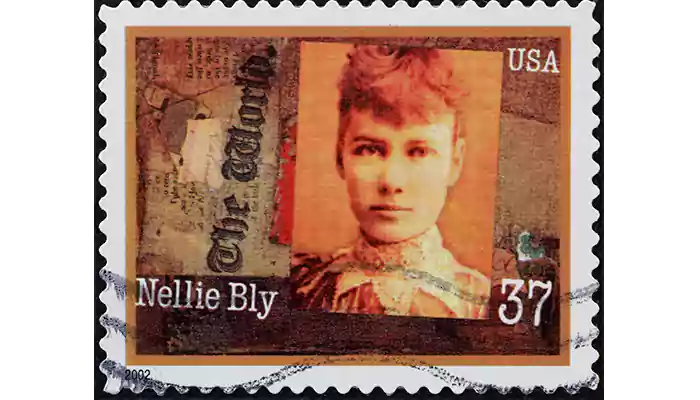Nellie Bly – the mother of investigative journalism

If there is ever a feature on badass historical women, that list willnever be complete without including Nellie Bly.From a girl who was often called Pinky for frequently wearing pink colour while she was young to being the mother of investigative journalism – Nellie’s journey is both fascinating and inspiring. Nellie Bly was born at a time when women are supposed to be good only to be a home maker and for raising children. Her working as a writer for Pittsburgh Dispatch was in itself is a major breakthrough for a woman of that time and age. Nellie Bly was however built differently. She soon started to write investigative reports on the working conditions of women in factories much to the displeasure of its owners. After receiving complaints from the factory owners, her employers reassigned Nellie to “usual role of woman journalists” and cover petty topics like fashion, society, gardening. Nellie refused to be bogged down by the traditional roles of a women journalistand set out to do what no other women has done so far. She took up a job as a foreign correspondent and travelled to Mexico and spent more than half a year there, reporting back on the lives and customs of Mexicans. However, her outspokenness caused her much trouble with the Mexican government. In one of her reports, she had protested the imprisonment of a local journalist and the dictatorship under Porfirio Diaz was not pleased. When threatened with her own arrest, Nellie finally had to escaped from Mexico. Ten days in a Mad House After her stint in Mexico, Miss Bly struggled to find meaningful employment. Most of the newspaper wanted her to work in more women centric sections which Miss Bly refused. She finally landed an assignment to report undercover for New York World about the brutality and neglect of patients in Women’s Lunatic Asylum on Blackwell’s Island. This assignment brought her both money and everlasting fame. She had to first get admitted to the mental asylum by feigning insanity which in itself a griping tale. She was released after ten days of “treatment” which she later described in her report “Ten Days in a Mad-House”. The report created a sensation, bringing in much reform not only in the treatment of mental patients across various mental asylums but also paved way for women in different branches of journalism. Around the world in 80 days After the immense fame that Ten Days in a Mad-House brought her, Nellie Bly refused to rest in her past laurels. She successfully managed to persuade her editors to let her attempt to recreate the famous novel "Around the World In 80 Days". Not only did she complete it with eight days to spare, she even made a detour to interview Jules Verne, the original author. Nellie Bly was inducted to National Women’s Hall of Fame in 1998 and honoured with a US postage stamp in 2002.












